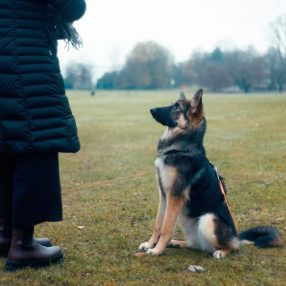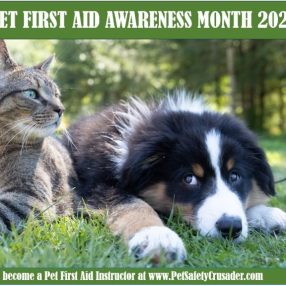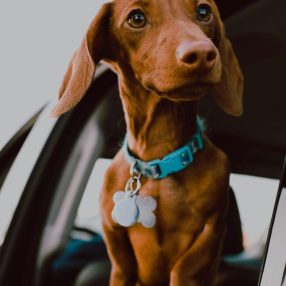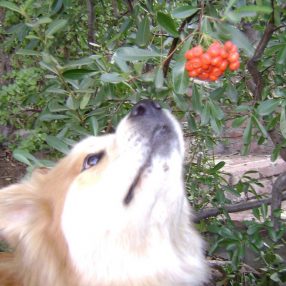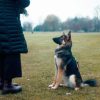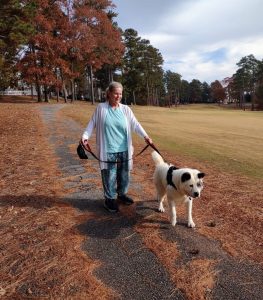
The arrival of a dog in the home is always a joy and happiness for the entire family. The little puppy now has a new home, and the pet owner has a new status as a master. One wants to share this joy with the whole world and go on the first walk with their pet. In this article, we have compiled recommendations on how to prepare the puppy for going outside and why it is necessary to walk the dog.
Why Walk Your Dog and When to Start Walking with a Puppy
Relieving itself outside is the first thing a dog should do during a walk. Of course, cleaning up after your pet’s messes and other inconveniences in the apartment can be quite troublesome for the owner. However, the main reason for going on a walk is to improve the dog’s well-being. The need to hold back the urge to urinate for a long time is harmful to the animal’s health and can lead to diseases. There are several other important reasons why it’s necessary to walk your dog:
Maintaining Overall Physical Condition
At any age, a dog needs physical exercise, especially little puppies. This helps maintain muscle tone and positively affects the functioning of the musculoskeletal system as a whole. Being outdoors improves the functioning of internal organs, and the brain gets oxygenated. Regular walks improve digestion and help avoid gaining excess weight.
Dog Socialization
Just like people, domestic pets need social interaction: with other animals, members of their own kind, and people. Socialization is essential for the full development of a dog.
Caring for Mental Health
During a walk, a dog experiences new emotions, which positively affects the animal’s psyche. When staying at home for a long time, a dog can become bored and sad. Without anything to do, the pet might damage things or furniture, and even relieve itself right on the floor.”
Additionally, walking is an additional opportunity for the dog to interact with its owner. It serves as a unique ritual that brings joy to both the pet and its owner amidst the daily routine.
When is it appropriate to start taking a puppy outside?
There is no definitive answer to this question. Experts recommend starting walks as early as possible. For instance, it is believed that puppies begin to experience a ‘fear period’ around 3 months of age, during which they may become fearful of going outside. By 4 months, a dog might miss out on a significant portion of socialization.
Therefore, the optimal age to start walks is when the puppy is around 2 to 2.5 months old, but this isn’t the only consideration. Besides the pet’s age, it’s important to consider the following:
- The puppy should have completed all necessary vaccinations and observed a two-week quarantine period thereafter.
- The puppy should be treated for parasites.
- The domestic pet should be healthy.
Both the dog and its owner should take the walk seriously. To avoid any unpleasant surprises such as fines, owners are advised to familiarize themselves with local dog-walking regulations.
- Dogs should be walked in designated areas (such as training and obedience grounds), and walking them in children’s playgrounds, near residential buildings, and children’s institutions is strictly prohibited.
- After the dog has relieved itself, the owner is obliged to clean up after it.
- The dog must wear a collar with the owner’s phone number. When moving along the road, sidewalk, pedestrian crossing, and en route to the walking area, the dog should be on a leash.
- In public transport and public places, it is prohibited to be with a dog without a muzzle.
It’s important to note that a dog’s continuous barking can disturb the peace of those around. Non-compliance with regulations can result in fines for the owner. Additionally, if a dog bites someone, the consequences go beyond just a fine.
How to Prepare a Puppy for Walks
While the puppy is undergoing home quarantine after vaccinations, it’s a good time to focus on preparing for outdoor excursions. The young explorer will encounter many new experiences during walks, so start training early.
Learn Basic Commands
Discipline is required from dogs on walks, primarily for the pet’s safety. Behavioral patterns are established through commands. This takes time, so start introducing commands at home. Useful commands for outdoor walks include: ‘Heel’, ‘Come’, ‘Leave it’, ‘Walk’.
Make Your Dog Wear a Harness and Lead
A dog harness and lead set is an indispensable tool for responsible pet owners, ensuring both the safety of your beloved furry friend and peace of mind during outdoor adventures. This innovative contraption features a sturdy harness that snugly fits around your dog’s body, distributing pressure evenly across their chest and shoulders to avoid any discomfort or strain. Made from durable materials such as nylon or leather, these harnesses are designed to withstand even the most energetic dogs’ antics without compromising on quality. The attached lead provides you with full control over your dog’s movements while allowing them enough freedom to explore their surroundings comfortably.
Acclimate your puppy to wearing gear
Dog gear is essential to control your pet during walks. Moreover, the law often requires a collar and leash. A leash prevents the puppy from running away and allows the owner to quickly pull the pet back in case of danger.
Choose the first collar according to the size of the puppy; it shouldn’t be bought to grow into. Ensure the collar is comfortable for the puppy, opting for soft and lightweight models. The leash should not be too long. Avoid chains and retractable leashes that make intimidating noises.
Carefully place the collar around the puppy’s neck. Adjust it so it’s not too tight and doesn’t slip off due to the pet’s movement. Allow the puppy time to get used to this new feeling. Once the puppy stops paying attention to the collar, start introducing the leash. Initially, a short cord can be used for the puppy to move around the house. Then, periodically pull it gently to simulate a walk with a leash
Key considerations when introducing your puppy to gear:
• Allow new accessories to air out to remove any foreign scents.
• Let your puppy sniff the collar and leash before trying them on.
• Discourage playing with or chewing on the gear.
• Use playful training methods while maintaining a positive attitude.
• It’s absolutely forbidden to hit the puppy with the leash.
• Reinforce proper behavior with treats.
• Never leave the puppy unattended with the leash attached.
Introduce the Muzzle
Is a muzzle necessary for a puppy? On the one hand, it seems unnecessary to put a muzzle on a young pup. During initial walks, they experience a multitude of new sensations, and a muzzle might be uncomfortable. On the other hand, there will come a time when it’s necessary, such as for public transport or vet visits.
If the puppy tends to pick up things from the ground, a muzzle can help protect its health. This accessory is also useful for large and strong breeds. Use a muzzle depending on your dog’s characteristics and when required by law. Introduce the muzzle using the same gentle, friendly, and stress-free approach as with the collar and leash.
When to Feed a Puppy: Before or After a Walk?
The digestion process in dogs is not rapid. From the moment food enters the pet’s stomach to its complete processing, it takes several hours. During this process, the animal needs a state of rest.
Feeding a puppy before a walk is not recommended. After eating, a puppy tends to be less active and less inclined to explore its surroundings. It’s difficult for a dog to move with a full stomach, and this could lead to intestinal torsion.
The first thing a young pet should do in the morning is to relieve itself and clear out what has accumulated overnight. After the puppy has taken care of its needs and had an active walk, it will be more eager to eat. Proper feeding behavior is developed at a young age in dogs, making it especially important to pay attention to how puppies are fed during this period.
A young pet’s body requires balanced nutrition with essential vitamins and minerals. Specially formulated puppy foods are designed to help establish healthy eating habits. These foods contain all the necessary components for the growth and development of puppies of all breeds.
What to Do During Walks and How Long to Walk
The adaptation period to walks greatly influences a puppy’s future attitude towards outdoor activities. Therefore, it’s crucial to create a safe environment from the start. Here are some guidelines for the first walks:
- Start walking as early as possible (after all vaccinations) and try not to skip walks to establish a regular routine.
- Initially, carry the puppy in and out of the building.
- Then, carry them out and let them walk back in on their own.
- Allow the puppy to sniff around and explore at its own pace.
- For initial walks, choose a quiet place away from people, dogs, and traffic to minimize stress.
- Encourage the puppy if it bravely explores or successfully relieves itself outdoors for the first time.
- Gradually increase the walk’s duration and distance from home.
- Once the puppy is comfortable outdoors, start introducing it to other friendly dogs.
- During walks, ensure the puppy accomplishes the following and stays engaged:
- Relieve itself both for small and big needs.
- Enjoy a run (the duration depends on the breed).
- Have a leisurely walk.
- Practice new commands and reinforce old ones.
- Interact with you and other dogs.
- Train at a dog playground.
Remember, the owner is the leader. It’s the owner who should set the walking route and lead the dog, not the other way around. It’s important to instill this understanding in the puppy from the first walks. Discourage leash pulling or running off leash over long distances. Reward your pet when it comes on your call and offer treats.
How Often Should You Walk a Puppy Each Day?
The frequency of daily walks depends on the age of the young pet. The younger the dog, the more frequent the walks should be:
- 2-3 months old: 5-6 times a day,
- 4-5 months old: 4-5 times a day,
- 6-8 months old: 3-4 times a day,
- 9-11 months old: 3 times a day,
- 12 months old: 2 times a day.
Also, consider whether the puppy manages its bathroom needs effectively. If all goes well, you can gradually reduce the number of walks. If the puppy struggles or doesn’t go to the bathroom, consider spending more time outside until it does. As walks become less frequent, they should become longer. You might need to adjust the number of walks if the dog isn’t feeling well.
Bad weather is not a reason to skip a walk, except in severe conditions that could make the puppy ill. Protect your pet in damp and cool weather with special dog clothing, particularly important for toy breeds. Remember, like with collars and leashes, puppies should be gradually accustomed to wearing coats and jackets.
Returning from a Walk
After the walk, don’t forget to wipe your puppy’s paws with a damp cloth. In wet and muddy conditions, you may need to wash not just the paws but the entire puppy. This hygiene practice is crucial, not just for the cleanliness of your pet and home.
Learn more about how to clean your dog’s paws after a walk here: https://pottybuddy.co/blogs/potty-buddy-blog/how-to-clean-dog-paws-after-a-walk
During walks, dogs can step in puddles with chemical substances, like gasoline. In winter, they walk on roads treated with deicing agents. Puppies can also get cuts, splinters, or even bring home ticks on their skin. Therefore, after walks, wash their paws and inspect them for injuries or foreign objects.
It’s advisable to get your puppy used to water procedures from an early age and reward them with treats for good behavior during washing. For heavy soiling, use special dog cleaning products. Be mindful of the water temperature; it should not be drastically different from the outdoor temperature. After washing, thoroughly dry the paws with a dry cloth to prevent slipping on tiles and avoid injuries.
Post-bath time is ideal for feeding your pet, followed by some rest. Gradually, the puppy will get used to walking and all associated routines. The key during this period is patience and supporting your pet as they take their first steps into adulthood.


